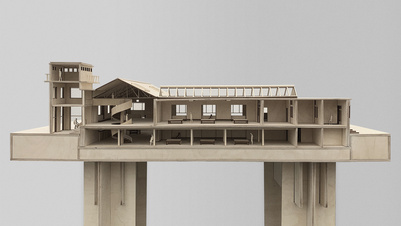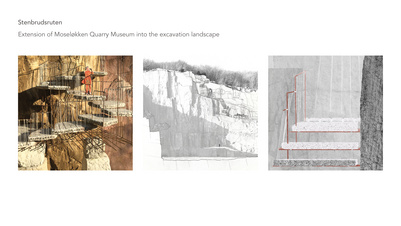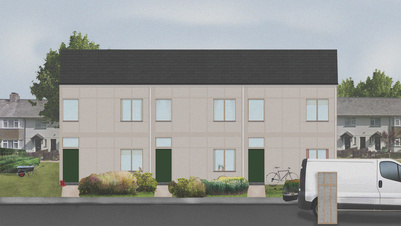Name
Isabella Priddle
Education degree
Master
Subject area
Architecture
Study programme
Spatial Design - Architecture, Design and Interiors
Year
2021
LeBreton Flats, now largely vacant, was the site of one of Canada's largest timber mills. Trees were felled and placed in the Ottawa River to begin their journey to the mills at LeBreton. Inspired by the movement of logs in water, this timber museum and workshop is formed of a floating village connected by a dock, flowing with the ever-changing water, animated by people and their wooden projects.

outdoor workshop

approach from inlet

path to workshop district

path to library

visitor district

workshop
The Royal Danish Academy supports the Sustainable Development Goals
Since 2017 the Royal Danish Academy has worked with the Sustainable Development Goals. This is reflected in our research, our teaching and in our students’ projects. This project relates to the following UN goal(-s):
Quality education (4)
Sustainable cities and communities (11)
Responsible consumption and production (12)
CV
CV Title
Telefon
52744029
Competitions, Publications & Awards
2015
2018
Building 22 Publication, Editions 15-18
2018
2018
Carleton University Senate Medal
2018
2018
Nicholas Scolozzi Scholarship Recipient, Carleton University
2017
2018
OAA Award Recipient
2016
2016
Faculty Choice Award Finalist, Carleton School of Architecture
2015
2015
Michael Russel Coote Memorial Award Recipient
Education & Relevant Courses
2014
2018
Bachelor of Architectural Studies (BAS), Carleton University, Azrieli School of Architecture & Urbanism
I completely my bachelor's degree in Ottawa, Canada at Carleton University. Here, I had the opportunity to have a comprehensive architectural education whilst learning to handle the conflicting demands of function, aesthetics, technology and economy.
2019
2021
Master of Architecture, The Royal Danish Academy, Spatial Design
In the Spatial Design programme, we focused on architecture with the interior as a point of departure. This consisted of working at the human scale, with anthropology, history and tectonics as key guiding principles.
Professional Work Experience
2016
2020
Hobin Architecture, Architectural Designer
Ottawa, Ontario, Canada
2015
2015
The WoodSource, Timber Mill Worker
Ottawa, Ontario, Canada
2020
2020
Danielsen Architecture, Model Maker
Copenhagen, Denmark
2021
2021
Archival Studies, Architectural Intern
Copenhagen, Denmark




























